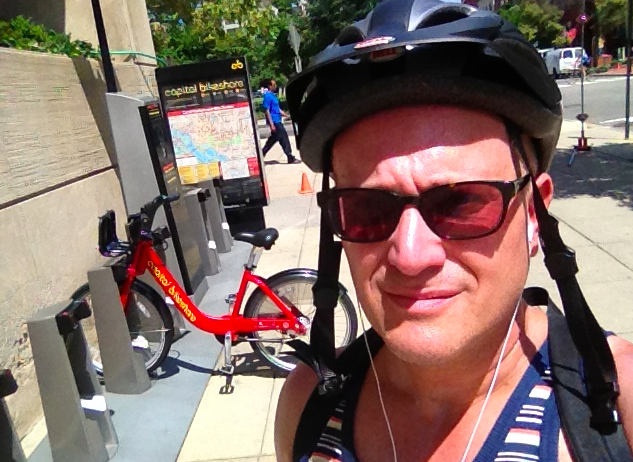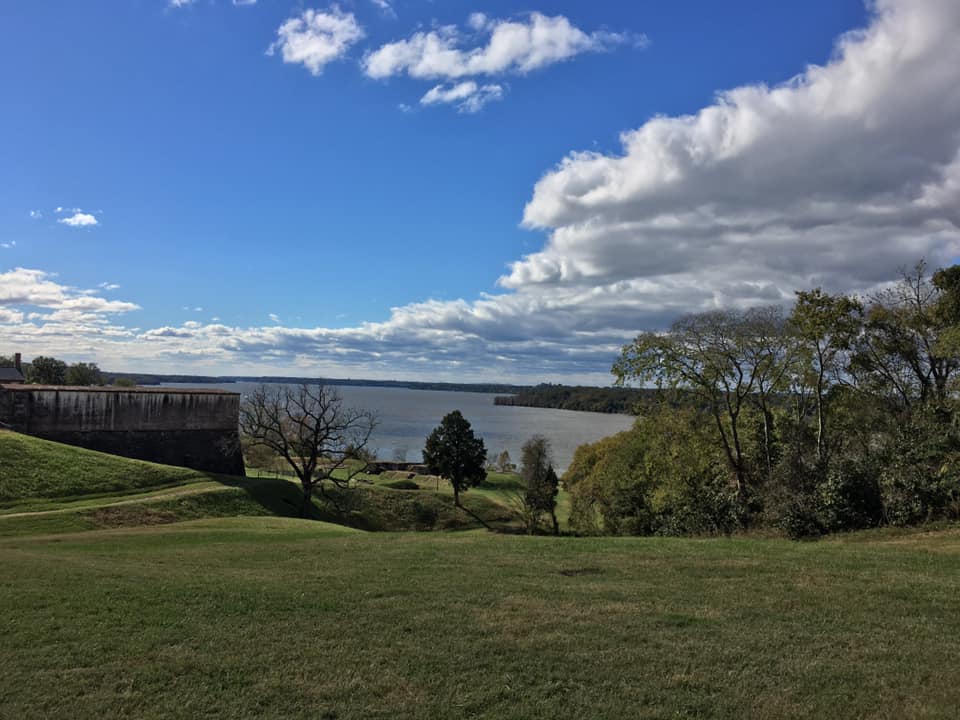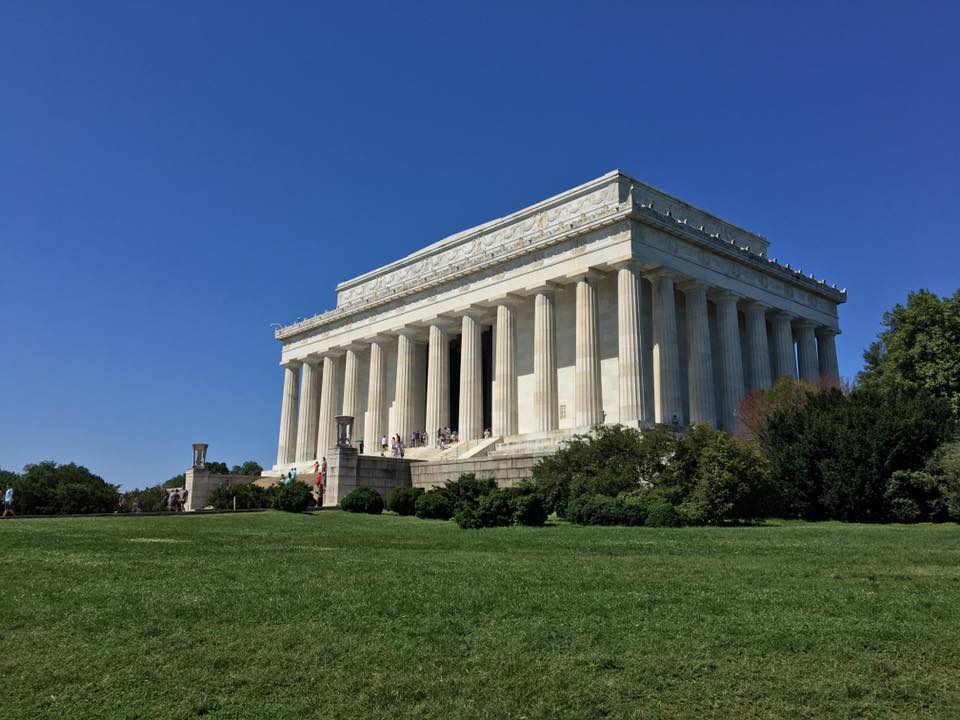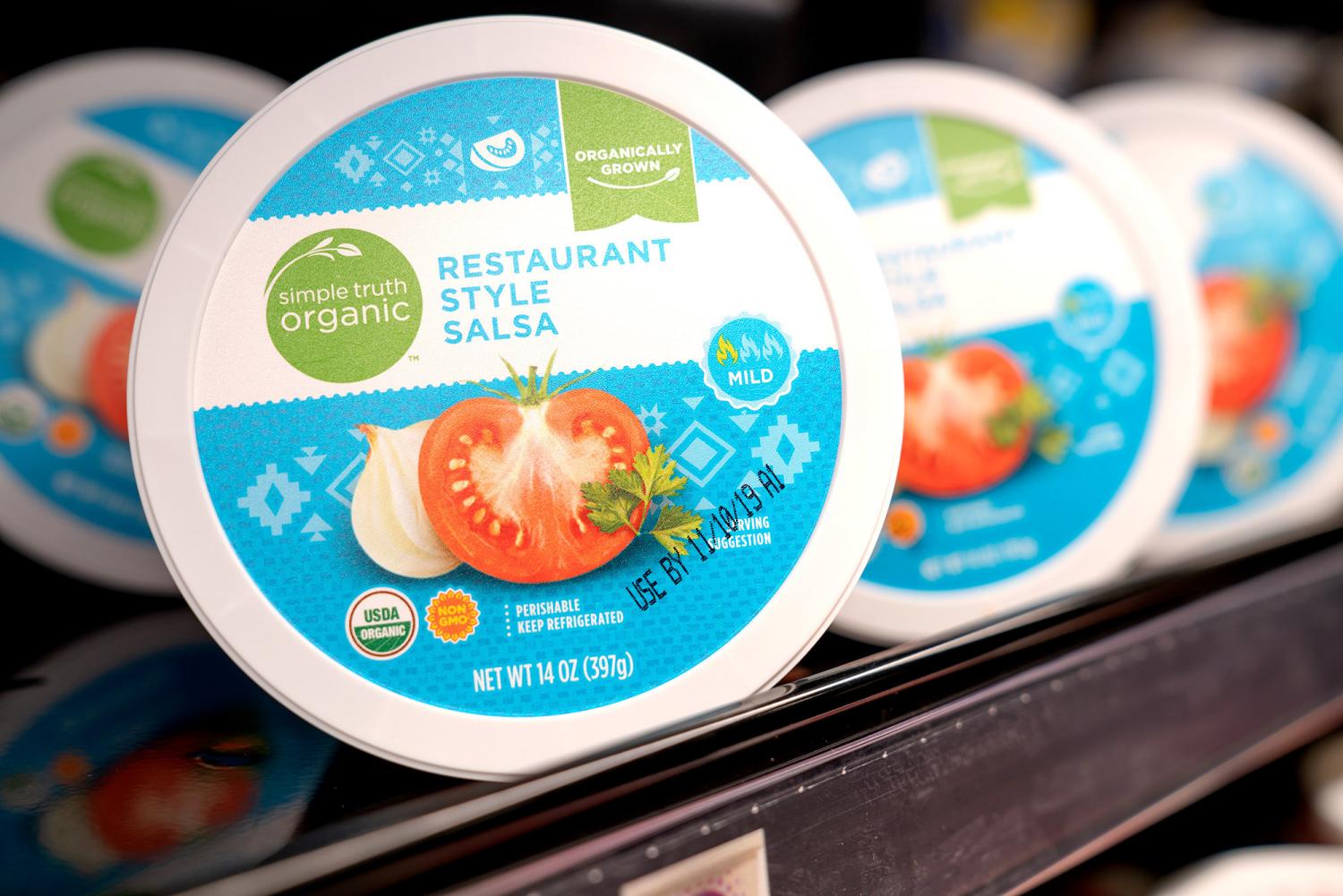3BL Forum: 2019 Responsible CEO of the Year Award Winners Embody Sustainable Leadership


Tonight, we’re live from MGM National Harbor, where we have just given out Corporate Responsibility Magazine’s 2019 Responsible CEO of the Year and Lifetime Achievement awards during this year’s 3BL Forum: Brands Taking Stands – What’s Next.
We give these awards to corporate executives who exemplify bold and innovative leadership as they continue to deliver on their companies’ environmental, social and governance (ESG) commitments; this year’s finalists, of course, are no exception.
Tonight’s recipients of the 2019 Responsible CEO of the Year and Lifetime Achievement awards are:
- Responsible CEO of the Year: ESG Leadership: Jeff Eckel (shown above), Chairman and Chief Executive Officer, Hannon Armstrong
- Responsible CEO of the Year: Nonprofit Organization: Sylvia Acevedo, Chief Executive Officer, Girl Scouts of the USA
- Responsible CEO of the Year: Brands Taking Stands Leadership: Brad MacAfee, Chief Executive Officer and Senior Partner, Porter Novelli
- Responsible CEO of the Year: Public Company: Hans Vestberg, Chairman and Chief Executive Officer, Verizon
- Lifetime Achievement: David Taylor, Chairman, President and Chief Executive Officer, Procter & Gamble
By minimizing each of their company’s environmental footprint, ensuring more sustainable operations and supply chains, embracing diversity and inclusion into the fabric of their companies’ culture or ushering in a new wave of female leaders, the finalists for 2019 have been instrumental in defining future-thinking leadership at a time when it is needed most.
“Congratulations to our awardees—we know they will continue to be forces for good by championing a strong environmental, social and governance agenda,” said Dave Armon, CEO of 3BL Media and publisher of CR Magazine. “We applaud the personal commitment by this year’s CEOs for embedding ESG at the very center of their businesses and for the impact they are having as exceptional leaders.”
Within this ESG community, there is no shortage of awards and recognition programs; being recognized as a Responsible CEO, however, is especially meaningful as our judging panel is made of past recipients of Corporate Responsibility Magazine’s Responsible CEO of the Year Award.
Image credit: Hannon Armstrong Communications
Field to Market: Providing Farmers with Economic Security


This summer, over 100 scientists sent the world a dire warning: The rise in global temperatures, linked to increasing pressure on fertile soil, risks jeopardizing global food security.
The warning came from the U.N. Intergovernmental Panel on Climate Change (IPCC) as part of its annual report on climate change and agriculture.
“Food security will be increasingly affected by future climate change through yield declines, increased prices, reduced nutrient quality and supply chain disruptions,” said Priyadarshi Shukla, co-chair of IPCC Working Group III, which focuses on climate mitigation.
But all is not lost. The IPCC offered a potential roadmap out of the pending doomsday scenario: the scaling up of new, more efficient, and sustainable agriculture technologies and methods.
For the food and beverage sector, the report and its recommendations came as no surprise. Industry leaders have been keenly aware of the impact climate change could have on the supply of the raw ingredients they need. Not only are food and beverage brands working feverishly to avoid being seen as part of the problem, but they are also looking to be part of the solution.
Bringing companies together for change
It’s not hard to find case studies of food and beverage companies shifting to more responsible land use for farming. Mars’ Sustainable in a Generation Plan and Unilever’s Sustainable Living plan, for example, are pushing sustainable agriculture forward. In addition, General Mills and Kellogg Co. made commitments to responsibly source priority ingredients like corn, wheat, cocoa and palm oil by the end of next year.
While these programs help companies move in the right direction, the enormity of the challenge is far too great for any one company to tackle without like-minded partners.
That’s where Field to Market: The Alliance for Sustainable Agriculture steps in. The Alliance links together leading companies with grower organizations, academia, conservation groups, and public-sector partners to create more productive and profitable opportunities across the agricultural value chain.
“When we were founded in 2006, some thought the idea that rivals could collaborate pre-competitively to create better outcomes for agriculture and the environment sounded too good to be true,” Betsy Hickman, vice president of stakeholder engagement and implementation at Field to Market, told CR Magazine.
Over the past 13 years, Field to Market has proved the naysayers wrong. Examples include the group’s work with Unilever and PepsiCo, which utilize Field to Market projects to meet their commitments to reduce greenhouse gas emissions and sustainability source raw materials.
Repairing and revitalizing Iowa farmland
Field to Market has a long history of supporting Unilever’s work with soybean farmers in Iowa who produce the oil used in Hellmann's mayonnaise. By encouraging farmers to adopt the sustainable practice of cover crops, the partners hope to improve soil health and water quality in Iowa, where nearly 90 percent of land is devoted to agriculture.
Used by farmers for centuries, cover crops reduce nutrient losses to the environment by protecting the soil surface from runoff and erosion. The practice keeps nutrients like nitrogen within the soil—reducing the need for fertilizers, improving long-term soil health, and preventing unwanted runoff from reaching local water sources.
More than 150 farmers signed up for the project in its first year, including many who raise corn, a key ingredient for PepsiCo. With some matchmaking by Field to Market, Unilever and PepsiCo teamed up to fund Practical Farmers of Iowa (PFI), a local nonprofit, to educate farmers about the benefits of cover crops while offering technical assistance to successfully implement this new practice.
How Field to Market makes the business case for soil health
For many farmers, investing in soil health improvements for the first time can be risky, as there’s no guarantee it will pay off economically. To help remove the risk, last fall PepsiCo and Unilever compensated 127 corn and soybean farmers for together growing over 20,000 acres of cover crop. Both companies will pay these farmers to grow cover crops through 2025.
“What is truly exciting about this approach is that it goes beyond measurement to deliver impact by focusing on supporting behavior change in farmers,” Hickman said. And she predicts we’ll see similar partnerships emerge across the agricultural supply chain.
“There is a competitive advantage to building a long-term, sustainable supply of the raw materials and ingredients these businesses depend upon in a hotter, scarcer and more crowded world,” Hickman added. “Rather than waiting for improvements in their supply chain to come as result of setting a sustainability target, we are seeing more and more companies roll up their sleeves to work in partnership to improve outcomes for farmers, business and the planet.”
This article was also published in CR Magazine.
Image credit: Melissa Askew/Unsplash
Live from National Harbor: What’s in Store for Day One of 3BL Forum


Welcome to those of you attending 3BL Forum at MGM National Harbor! This morning’s agenda alone will kick your week along the Potomac River into high gear as we’ll headline with best-selling author and sustainability thought leader Simon Mainwaring.
Soon after, we’ll dive right into what it means to be authentic in this age of what we here at TriplePundit call “purpose-watching.” Eileen Boon of CVS—the retail chain that stood out a few years ago for ceasing tobacco sales—will join Porter Novelli/Cone’s Alison DaSilva to talk about the pluses and minuses of “purpose” . . . and why using the word “purpose” is a far cry from living it and integrating into a brand’s experience.
Later on, we’ll take a deep dive into what it means to be a progressive consumer here in the U.S. Taking the stage will be leaders from the Guardian and Morning Consult, who will talk about what it means to be “progressive” beyond voting red or blue, explore what motivates progressive consumers, and explain what this group could mean to your company.
And what does it mean to be a privately-held or family company these days? For one thing, companies including Hallmark are becoming more transparent about their impacts on the planet and people. The Kansas City-based greeting card titan will be joined by executives from family-run companies including Cathay Pacific Airways, as well as the grandson of the late Ray C. Anderson of Interface, the company that sparked the corporate sustainability discussion long ago.
And all of this is happening before 10:30 a.m.!
More will be in store later this afternoon—including thoughts on corporate activism by, who else, the CEO of Ben & Jerry’s, Matthew McCarthy. We’re also devoting quite a bit of time to second chance hiring and what it means for America’s most overlooked talent pool: people with criminal justice histories. Wait, there’s more: We’ll also be hearing from Spotify on the impact millennials and Gen Z are having on brands, the digital world and culture at large.
Once again, welcome to National Harbor, and in the event you’re staying another day or two in the D.C. area, we have a list of sustainable and outdoor ways to occupy that extra time.
Image credit of MGM National Harbor: Leon Kaye
As Natural Disasters Become the Norm, Are Relief Agencies Ready?


The increasing occurrence of natural disasters, from Hurricanes Irma and Maria to the California wildfires, means humanitarian relief agencies will need to cover more ground and be more nimble, while competing for precious dollars.
So, what can the disaster relief community do to keep up? Jim Alvey, senior director of disaster recovery at the nonprofit Good360, says NGOs, government agencies and the private sector must shift the way they approach humanitarian aid in the wake of repeated disasters.
“With both the frequency and intensity of natural disasters on the rise around the globe, there’s an urgent need for a more thoughtful approach to the way we respond and help impacted communities recover,” Alvey told CR Magazine. “It’s about building resilience that will help communities bounce back more quickly when the next disaster strikes.”
“Technology alone will not prepare us for tomorrow’s disasters”
Good360 has weathered many disasters. When it first launched 35 years ago, its mission was to help companies and nonprofits respond more efficiently and effectively. No question, it has had an impact. Today, more than 400 corporate partners use Good360 to ensure that the right types of goods are distributed when and where they are most needed.
But Alvey worries there is still much more to be done. Donations often don’t reach those who need it, and a staggering 60 percent of goods donated during times of disaster ultimately go to waste. Further, 70 percent of donations occur within the first two months after a disaster, with a meager 5 percent allocated to critical long-term rebuilding and recovery.
“Technology alone will not prepare us for tomorrow’s disasters,” Alvey explained. “It is more important that we develop holistic solutions: Improved communication, collaboration, information-sharing and education will take us farther, faster.”
That means organizations focused on disaster recovery need to be far more proactive, Alvey said. From Good360’s perspective, the key is to establish relationships and partnerships before a disaster strikes.
That’s the impetus behind the Good360 Disaster Recovery Council. Established in 2016, the Council seeks to inspire better communication between NGOs and companies, so they can collectively respond when disasters strike. Members include the UPS Foundation, United Airlines, Ecolab, CVS Health, Wrangler, Amazon, TD Bank and the U.S. Chamber of Commerce Foundation.
One of the Council’s first steps was to establish the Resilient Response campaign in conjunction with the agencies Global Citizen and All Hands & Hearts–Smart Response. The campaign centers on a six-point pledge that commits companies to provide disaster assistance that addresses long-term needs, as well as resilience, disaster preparedness and mitigation. Since last year, 33 companies have taken the pledge.
The pledge in action
For Alvey, the pledge is more than words on paper—it’s a call-to-action, and companies are responding in kind.
Earlier this year, soft drink giant Coca-Cola formed the Disaster Action Alliance in its home city of Atlanta. The coalition brings together local companies to integrate long-term resilience into their disaster recovery and engagement plans. In addition to Coke, participants include the UPS Foundation, the Home Depot Foundation, the American Red Cross and WarnerMedia.
Another Good360 partner, Wrangler, says it’s doing its part by helping to rebuild homes, schools and community buildings long after disasters have passed, while participating in tree-planting efforts to make communities more flood resistant.
GAF, a leading roofing manufacturer in North America, is taking on mid- and long-term recovery needs. After Hurricane Florence hit North Carolina in 2018, GAF sent 14 truckloads of ultra-durable roofing shingles—which are designed to withstand storms and hurricanes—to communities across the state.
Importantly, the company was strategic in its giving. “Sending donations that cannot be utilized to the field in the midst of a disaster inundates nonprofits and slows down the recovery process,” Alvey explained. “GAF understood this.”
Rather than sending donations directly to the disaster’s epicenter, trucks headed to one of Good360’s warehouse partners, where they were stored until communities were ready for them a few months later. The shingles now cover more than 100 homes.
Finally, Airbnb—one of the first companies to sign on to Resilient Response pledge—is increasing calls for its vacation rental hosts to open up their homes for free to provide shelter for stranded residents, travelers and support workers, who often stay on the scene for months after a disaster is over.
“Each of these companies has acted on their pledge,” Alvey told us. “But we need more.”
This article was also published in CR Magazine.
Image credit: David Mark/Pixabay
Lyft Makes All Rides Carbon Neutral, But That’s Only the Beginning


This article series is sponsored by 3Degrees and produced by the TriplePundit editorial team.
It’s been over a year since Lyft made all rides on its platform carbon neutral. The commitment is one of the top 10 voluntary carbon purchase projects anywhere, having offset over a million metric tons of carbon in its first year alone. But the ride-sharing giant says it’s only the start of a long-term journey to decarbonize its operations and positively influence the way transportation works in cities.
Beyond carbon neutral rides: Offsetting is step one
Founders John Zimmer and Logan Green say they started Lyft with the intention of transforming the transportation industry for the better, starting with one of the most problematic modes of travel: personal vehicles. Before they met, Logan Green organized a carpooling program on his college campus at the University of California, Santa Barbara, while John Zimmer wondered how sharing rides could improve our lives in cities.
Fast forward to today, and Lyft is a public company and its platform facilitates more than 1 million rides every day. But there’s a limit to how much impact ride-sharing can have on the broader transportation industry: In a major city like Los Angeles, for example, ride-sharing only accounts for 3 percent of miles traveled.
“If we look out on the world today, there are a lot of emissions that come from our transportation system. In fact, it is now the largest source of greenhouse gas emissions [in the U.S.], even bigger than electricity,” said Sam Arons, director of sustainability at Lyft. “So we feel a moral [duty] to take responsibility for emissions and to help to move the transportation system in a direction that eventually, we believe, will be emissions-free.”
Becoming carbon neutral is the first step in that process, Arons told us. The carbon offsets chosen with the help of renewable energy and climate solutions partner 3Degrees don’t just neutralize the emissions of rides. They also magnify the impact Lyft is making on transportation and in its communities.
Over the first year of the program, a large percentage of Lyft’s investment supported projects that reduce emissions in the transportation sector, including automotive manufacturing and waste oil recycling.
One such project with Meridian Magnesium helps to reduce the emissions associated with manufacturing auto parts. Meridian makes parts from lightweight magnesium alloys, which are stronger and lighter than traditional materials such as steel, allowing companies to build lighter, more fuel-efficient cars. Since 2001, the company has been working to cut the emissions intensity of manufacturing at its plant in Eaton Rapids, Michigan. Most recently, this effort culminated in a project to reduce sulfur hexafluoride emissions, a powerful greenhouse gas that has a global warming impact 22,800 times greater than CO2.
The project required an upfront capital investment by Meridian, as well as a change in its manufacturing process. Though the new process cuts emissions, it is more expensive and less efficient than what Meridian used previously. Carbon offset sales from companies like Lyft are the only source of revenue for this project and allowed it to move forward.
Make your impact bigger than yourself
Lyft already powers its offices with renewable energy. And earlier this year, the company launched a program in Seattle and Atlanta to make hundreds of electric vehicles available for drivers to rent. It also added a ‘Green Mode’ to its app in Seattle and Portland, allowing riders to request a hybrid or electric vehicle.
Expanding the program will be challenging, though. Electric vehicle batteries are not cheap, and current government incentives and grants are designed more for individuals than for companies, Arons explained. Lyft says it is working with local, state and federal policymakers to make these programs more accessible to industries that use fleets of vehicles, because fleet vehicles can drive three to five times more miles per year than personal vehicles, and thus reduce up to five times as many emissions.
The company is also working with public transit agencies to get people on buses and trains when possible. Not to mention that Lyft is the largest bike-share operator in the U.S., powering bike-share systems in major cities like New York, San Francisco, Boston and Washington, D.C., and the company continues to invest in bikes and scooters to offer customers more low-emissions options. “At the end of the day, we have to eliminate our emissions altogether,” Arons told us.
“We’re trying to help get more people into fewer cars—or even out of cars entirely and into more appropriate modes of transportation—and reclaim cities from cars and give them back to people,” he continued. "We think that if we can help to remove the need for personal car ownership, we can start to see a reduction in the need for so many parking spaces, a reduction in the need for so many lanes. We believe that, over time, we can take these public spaces back from cars—turn those parking lots into parks, widen sidewalks and improve street life.”
Through its Lyft City Works initiative launched in March, the company committed to invest a minimum of $50 million a year (or 1 percent of profits, whichever is greater) in grassroots transportation initiatives that improve quality of life in cities. Its first investments will support civic groups in Los Angeles that focus on developing transportation infrastructure, particularly in underserved neighborhoods.
In the meantime, though, the company expects its carbon neutrality commitment to offset more than 1 million metric tons of carbon emissions annually while supporting projects that reduce the carbon intensity of transportation.
“In the future all vehicles will operate with clean energy. But climate change is not waiting,” founders Zimmer and Green wrote on Medium. “This action is not the full solution, but a real step forward.”
Images courtesy of Lyft
In Chile, a Circular Economy Game-Changer Is on the Rise


Transformational change can happen in any market, in any industry. What was once the status quo can be reimagined and replaced with better, healthier alternatives - healthier for consumers, the environment and the bottom line. We’re seeing this happen right now within the circular economy - and in a market that isn’t on either side of the Atlantic.
This game changer is underway in Santiago, Chile. Algramo is a small startup with core principles that have caught the eye of major circular economy investors and is being examined by the major consumer packaged goods (CPG) company Unilever.
What’s the big deal with this small company?
Algramo is ditching plastic waste and bringing refills to consumers when and where it’s most convenient. José Manuel Moller, founder and CEO, was an MBA student studying advanced design at Pontifical Catholic University of Chile when he started Algramo, which in Spanish means “by the gram.” He launched the company in small neighborhood grocery stores, selling food staples like rice and lentils, at a low cost, in refillable containers and within steps from their homes.
Manuel saw that in low-income neighborhoods, families and individuals are held back by grocery item prices, even for basics. Purchasing items in bulk lowers the cost per unit, but it still comes with a high upfront price. Without enough cash at hand to purchase bulk items, people are left with two options: buy smaller units (by weight, smaller packages can cost 30-50 percent more than the same product in a larger container); or, buy from large commercial stores outside the community, using extra resources to commute. These methods lead to wasted resources, packaging and emissions.
As a solution, Algramo's circular economy model was built to lessen consumers' financial and environmental burdens. The company allows customers to purchase any amount of product, like bulk foods and cleaning products, at a fixed price while supporting local businesses.
Algramo also addresses packaging waste in its model. Customers are rewarded with increased savings when they refill their containers. A radio-frequency identification (RFID) tag on the container works in two ways: it lets customers load funds into an account—making it a cashless system and it tracks when the container is brought back so a discount can be applied toward a future purchase. In Santiago, the rate at which customers reuse packaging has grown to about 85 percent.
Chile has already taken a bold step in becoming the first country in the Americas to ban plastic bags in an effort to help protect the environment, especially the ocean. In addition to plastic bags, tackling packaging waste is high on the nation’s to-do list. If more companies committed to innovative solutions, like Algramo, packaging waste that often ends up clogging landfills or littering the environment could be significantly reduced. Hence Algramo is disrupting the vast consumer packaged goods (CPG) industry by advancing new technologies and introducing new distribution channels.
As Algramo makes its way into laundry facilities in high-rise apartment complexes in the U.S., take note of its successes. By delivering sustainable and sensible solutions to the most niche and convenient locations, this method will become the most viable solution to tackling the ongoing plastic waste program. And, greater change will happen.
This bold act of change deserves attention. Selling CPG staples in small bodegas and laundry rooms may not feel like a monumental idea to some, but the ripple effect caused by this model stands to create a seismic shift in a $8 trillion (and growing) CPG industry. If Algramo’s business model can attract investment from such groups as Closed Loop Partners and attention from a the likes of Unilever, then there’s a good chance this startup can transform consumer habits for the better globally.
Image credit: Algramo/Facebook
Eight Sustainable Ways to Pass the Time in the Washington, D.C. Region


For those of you attending 3BL Forum this week, in National Harbor, Maryland, welcome! The timing is certainly perfect, to start, thanks to the 100 speakers who will be onstage across two days – and also because of the crisp fall weather. Of course, we’d be remiss if we didn’t mention the exciting fact that the Nationals are in the World Series, a first for Washington, D.C. since 1933.
If you arrive today or tomorrow, there are plenty of ways to occupy your time before this turbo-charged agenda starts Tuesday morning in National Harbor. And if you are staying an extra day or two, we also have some suggestions on what to do in the District or across the greater area.
Getting around Washington, D.C.
Capital Bikeshare: Do you want to cram in all the sights, but don’t have a lot of time AND you want a workout? Then purchase a pass to enjoy Capital Bikeshare. The scarlet red bicycles will get you to those hard-to-reach sites like the Kennedy Center, Washington Cathedral or the Jefferson Memorial. Mind you, this system has been designed for local commuters; so while you can only ride a bike for 30 minutes at most, it’s easy to dock a bike, check out the views or score that coffee, and then saunter back and dislodge another bike to continue your merry capital way.
Be sure to download Capital Bikeshare’s app – it will let you know, with pretty good accuracy, where the closest bicycle docking stations are and how many bikes and docking stations are available. A tip: the stations around the Lincoln Memorial tend to be most crowded, so be sure you have plenty of time to park your bike within that 30-minute time frame so you don’t get dinged additional fees.

Above: the author at a Capital Bikeshare docking station in the DuPont Circle neighborhood of D.C. Note that some docking stations are far more frequented than others.
The great outdoors
Great Falls Park: About a 35-minute drive from downtown D.C., this 800-acre park (shown at the top of this page) along the Potomac River, run by the National Park Service (NPS), makes you forget you’re in one of the most populous (and congested) metropolitan areas on the East Coast. The rapids gushing at full speed through the spectacular rock formations could fool you into thinking you’re in the Rocky Mountains or the Sierra Nevadas instead of Northern Virginia.
Fort Washington Park: Less than a 20-minute drive from National Harbor, Fort Washington’s origins lie as a fortress built in 1809 to defend the fledgling new national capital. The fort didn’t always work – the British certainly had no problem getting by on their way to destroying much of D.C. in 1814. Over the decades this imposing set of buildings took various names as it continued to be vital to defending the capital until World War II. NPS has run the site since 1946 and has done a fantastic job preserving this wide-open space. The thick walls and lines of cannons are impressive, as is the nature that can be found lining the Potomac – plus the best part about Fort Washington is that even on a glorious Sunday day, visitors are sparse.

Above: Fort Washington offers spectacular views of the Potomac and a window into U.S. history
Hanging out
DuPont Circle: Before “inclusion” became one of this decade’s most overused buzzwords, DuPont Circle was the only neighborhood in D.C. where the region’s LGBTQ community could feel they were a part of anything “inclusive” while hanging out hung out in this vast safe zone of bars, cafes and restaurants that line Connecticut Avenue and Q Street. Like many gay neighborhoods in the pricier U.S. cities, the demographics are changing. If you have time, chilling out by the massive fountain that marks the actual DuPont Circle is a great way to whittle away time people watching.
U.S. Botanic Garden: George Washington had a vision for a botanical garden that would highlight the vast bounty of flora in the young United States. First established in 1820, the U.S. Botanic Garden offers a healthy dose of nature just a short walk from the east end of the National Mall, the Supreme Court and U.S. Capitol. If you happen to be in this area during a cold snap, the joy of this building, besides the displays and gardens, is the fact you can warm up and shed a few layers of clothing.
Eating and grazing
Alexandria, Virginia: In the cute and trendy district of Del Ray in Alexandria, the appropriately-named Del Ray Café serves organic and local fare in a historic white clapboard house. The restaurant’s egg dishes work nicely for breakfast or lunch; the seasonal vegetable hash is another fab option. Just a few steps away is the Bon Vivant Café + Farm Market, which offers a bevy of keto, paleo, vegan and gluten-free menu options.
Foggy Bottom: Home to the State Department, George Washington University and one of Margaret Truman’s murder mystery novels, this neighborhood offers plenty of food options if time won’t allow you to venture farther northwest into Georgetown. Founding Farmers, which is owned by a 47,000-member farmers union, scores raves for its vast menu, which includes handmade pasta and solid vegetarian options – including a meatloaf with protein courtesy of Impossible Foods.
Eastern Market: Located less than a 20-minute walk from the U.S. Capitol, Eastern Market has emerged as the leading showcase for D.C.’s artisanal food scene. Its history is a long one: when Pierre L’Enfant designed the layout of the nation’s capital in the 1790s, he envisioned a city with public markets akin to what he remembered in his native Paris. L’Enfant’s vision took a while; Eastern Market did not open until 1873. It is now one of the oldest public buildings in the District, and has certainly had its share of ups and downs, notably a catastrophic fire in its main all in 2007. Reopened a couple years later, Eastern Market can still brag that it’s been in operation for 146 years without interruption. The market’s vendors boast stellar flowers, local dairy products, humanely-produced meats and of course, fruits and vegetables – it’s all here. Side note: If you can’t make it to Eastern Market, this Curbed article has a good layout of other farmers’ markets in the wider D.C. area.
Image credits: Preston Low; Leon Kaye

Above: Of course, the Lincoln Memorial is the perfect stop on a Capital Bikeshare bike on the way to noshing in Foggy Bottom
3p Weekend: The Travel Industry Finds New Ways to Reduce Environmental Impact


Eco-travel has arrived. While Greta Thunberg sailing across the Atlantic Ocean in September on a zero-carbon yacht may be an extreme example, the travel industry — from large hotel chains and airlines, to boutique eco-resorts — is jumping on board to cater to the growing demand for environmentally-friendly travel options.
According to a recent report, 87 percent of global travelers polled say they want to travel sustainably, with two-thirds saying they would be willing to spend at least 5 percent more on their travel to ensure it is as low-impact on the environment as possible.
More hotels are taking on plastic waste
While nearly all major hotels have had “green” programs for years, a new trend is emerging to eliminate single-use plastic.
Marriott International, the world's largest hotel chain, announced in August that it will eliminate small plastic bottles of shampoo, conditioner and bath gel from its hotel rooms worldwide by December 2020. They'll be replaced with larger bottles or wall-mounted dispensers. The hotel says the move will eliminate about 500 million small bottles each year, or 1.7 million pounds of plastic.
The move follows a similar announcement by IHG, which owns Holiday Inn, Kimpton and other brands, which said it will eliminate about 200 million plastic toiletry bottles each year by 2021.
Last year, Walt Disney Co. said it would replace small plastic shampoo bottles at its resorts and on its cruise ships, as well as eliminate single-use plastic straws and plastic stirrers at all owned and operated locations across the globe. The “Happiest Place on Earth” will also begin adding hundreds of plant-based dishes this year at its fast-service and dine-in restaurants at its theme parks in Florida and California.
Just the tip of the green iceberg
Beyond the large hotel chains, a growing number of smaller hotels are popping up across the globe catering to eco-tourists, integrating sustainability into all aspects of the vacation experience.
In northern Finland, a new hotel expected to open in 2022 by the Arctic Brands Group will price stays based on guests’ emissions: the smaller their environmental impact, the less they will pay. Visitors of the resort can influence the cost of their stay by consuming less energy, attending ecological activities and making sustainable dietary choices.
The hotel — which will be known as Blue Resort — is expected to be self-sustaining, built with natural materials, powered by renewable energy sources, and with its own water treatment system. The hotel’s menu will consist of locally sourced, seasonal food. The hotel will also use a fleet of electric vehicles for transportation.
“We want to offer people a world-class eco-vacation and encourage them to make sustainable choices,” Mikko Spoof, vice president and founder of Arctic Brands Group, who thinks that companies are obligated to find new solutions to fight climate change, told the blog Inhabitat.
About 1,500 miles due west in Greenland, Hotel Arctic (no relation to the Arctic Brands Group) markets itself as a green hotel, noting on its website that it reduces its environmental impact by educating its employees and using new technology. Since 2013, the hotel (shown above during the Northern Lights) has been 100 percent CO2 neutral, with solar panels producing approximately 20 percent of its electricity. It is in the process of converting all of its igloo guest rooms — yes, igloos — to 100 percent sustainable energy.
Traveling south to the Caribbean island of Curacao, the Morena Resort touts its green credentials, including the use of environmentally sustainable materials from fair trade cooperatives in the region in the resort’s construction. In addition, each guest room has a solar water heater on the roof, which generates enough hot water for the entire day.
In Fiji, the Six Senses resort is powered entirely by a solar installation feeding Tesla battery packs – one of the largest off-grid energy systems in the South Pacific. The resort also uses a state-of-the-art, in-house reverse-osmosis plant and water refinery to alchemize rainwater into drinking water for reusable bottles.
Even the U.S. boasts an eco-hotel: Hotel Brooklyn Bridge. The property is 100 percent wind-powered and has a water-reclamation system that collects rainwater to keep neighboring Brooklyn Bridge Park hydrated during the summer.
Most of these hotels have earned a “Green Key,” a new eco-label that has been awarded to more than 3,100 hotels and other travel destinations in 57 countries for their adherence to strict criteria covering areas such as waste, environmental management and green activities.
Now, the travel industry has to address the elephant in the room
Of course, the environmental elephant in the room when it comes to tourism is air travel, especially given that not many tourists can afford the time (or cost) of a two-week trip by yacht to or from the U.S. or anywhere else.
The International Air Transport Association predicts that air travel will grow to 7.2 billion passengers by 2035—a near doubling of current levels. And while airlines are experimenting with biofuels and other ways to cut emissions, experts don’t expect the efforts to be enough.
“Airlines, for all intents and purposes, are becoming more fuel efficient. But we’re seeing demand outstrip any of that,” Brandon Graver of the International Council on Clean Transportation told The New York Times in September. “The climate challenge for aviation is worse than anyone expected.”
Over all, air travel accounts for about 2.5 percent of global carbon dioxide emissions. As the Times pointed out in its September coverage, this a far smaller share than emissions from passenger cars or power plants. Still, one study found that the rapid growth in plane emissions could mean that by 2050, aviation could take up a quarter of the world’s “carbon budget,” or the amount of carbon dioxide emissions permitted to keep global temperature rise to within 1.5 degrees Celsius above preindustrial levels.
While the airline industry has been criticized by some who say the majority of airlines’ long-term targets fall short of the Paris Agreement goal, a report by the Transition Pathway Initiative found that four airlines are taking a strategic approach to climate change: ANA Group, Delta, Lufthansa and United.
ANA Group — which operates the top-rated airline in its sector in the most recent Dow Jones Sustainability Index — is the first global airline to issue Green Bonds, which will raise funds for green projects both in Japan and overseas. ANA is also introducing biofuel on its flights by supporting Euglena Co Ltd, a biofuel maker working to commercialize jet fuel made from green algae output.
Germany’s Lufthansa has published a four-pillar strategy to reduce its CO2 emissions, that includes technological, operational and infrastructural measures as well as supplementary economic instruments. Earlier this year, the airline signed an agreement with a Hamburg-based refinery for the production and acceptance of synthetic kerosene from regionally generated wind energy to use as an alternative biofuel.
In the U.S., United Airlines is working to reduce its greenhouse gas emissions by 50 percent by 2050, while, in July, Delta flew a completely carbon-neutral flight. The Atlanta-Based airline plans to introduce 20 carbon-neutral aircrafts to its fleet moving forward.
Planes, trains and automobiles
With emerging middle classes growing in India, China and other Asian nations and the debut of more and more travel options, the global tourism industry is bracing for an explosion in numbers.
Sector leaders will be those that find sustainable ways to reduce their environmental impact and allow their consumers to do the same.
Image credit: Hotel Arctic/Facebook
Kroger Launching Simplified Labels to Reduce Food Waste


Earlier this month, the grocery store chain Kroger became the latest retailer to announce it would standardize food labels to provide consumers with simpler, easier-to-understand product quality and safety information in a move to reduce food waste.
Current food labels are confusing, contributing to food waste
With more than 10 different and confusing label options — sell by, enjoy by, fresh until, display until, best before — American consumers are often confused by if and when they should discard food, beverage and household products. In fact, a report by the Harvard Law School Food Policy Clinic and the Natural Resources Defense Council (NRDC) found more than 90 percent of Americans may toss food too early due to misinterpreting date labels.
Kroger’s new simplified labels will apply to multiple product categories, including dairy, deli, bakery and fresh and frozen grocery across its nearly 2,800 stores in 35 states. The labels are aligned with voluntary industry recommendations by the Grocery Manufacturers Association (GMA) and the Food Marketing Instiute (FMI). Based on input from more than 25 consumer products good companies, grocery retailers and other food experts, the guidelines advocate for just two simple labels (as an example shown above):
- "Use By" to represent food safety by indicating the deadline for when a product is no longer safe to eat.
- "Best if Used By" to represent food quality by setting the deadline for guaranteed freshness.
"By implementing a standard and simplified new date labeling approach, Kroger and our customers can play an instrumental role in preventing tons of food waste from arriving at landfills, resulting in a healthier, stronger planet and communities free of hunger and waste," said Jessica Adelman, Kroger's group vice president of corporate affairs and chief social impact officer, in the company’s announcement.
Reducing waste destined for landfills
As TriplePundit has previously reported, roughly a third of all food produced globally goes to waste. In the United States, this figure is closer to 40 percent— of which an estimated 20 percent is discarded because of consumer date labeling confusion.
We are talking a lot of food waste — 133 billion pounds to be exact — discarded annually, much ending up in landfills. The U.S. Environmental Protection Agency reports that more food reaches landfills than any other single material in the country. With approximately 20 percent of methane emissions in the U.S. coming from landfills, a reduction in food waste would have a positive impact on climate change, according to a report issued by GMA.
For food and grocery retailers, however, reducing food waste is more than about burnishing environmental credentials or improving their brands’ reputations. Companies can improve their profit margins as they become more efficient by tackling waste. According to a World Resources Institute study, for every $1 a company spends on waste diversion, it has the potential to gain a return on investment of up to $14 dollars. Better employee training, improved packaging and a leaner supply chain are just a few examples of how companies can benefit in the long run from focusing more on food waste.
GMA and FMI say 87 percent of products among its members have adopted the streamlined labels since their launch February 2017. They expect 98 percent adoption by the end of this year, and complete adoption by January 2020.
The Consumer Goods Forum, another global food industry network that boasts executives from about 400 retailers, manufacturers and food service companies, is also urging its members to simplify food date labels by 2020. The move will help the association reach its goal of slashing food waste among its membership 50 percent by 2025. Companies that are aligned include Bimbo, the largest baking company in the world; retailers Carrefour and Walmart; and food manufacturers Campbell’s Soup Company, Kellogg, Nestlé and Unilever.
Beyond labels, there are several fronts where companies can fight food waste
Food labels are not the only tactic retailers are using to reduce food waste. Last month, British supermarket Asda — owned by Walmart — began piloting a plant-derived, water-based coating on produce, which the company says “could drastically reduce food waste and potentially reduce the use of plastic packaging in future.”
The coating — known as Apeel — gives produce an extra “peel” that, according to manufacturer Apeel Sciences, slows the rate of spoilage — potentially doubling or tripling the shelf life of many types of fresh produce. The coating is composed of materials that exist in the peels, seeds and pulp of fruits and vegetables that is applied at growers’ sites in South America. The aim of such a product is to reduce food waste from farm to retail shelf to customers’ homes.
The Asda pilot marks the first time the technology has been tested in the United Kingdom after it was granted approval for use by the E.U. Commission in June.
In the U.S., Apeel Sciences has formulations that are OMRI (Organic Materials Review Institute) listed or the growers and distributors of USDA Certified Organic produce. According to the company’s website, Apeel avocados are currently available at major U.S. grocery stores.
If the technology catches on, Apeel Sciences hopes it will also help reduce the amount of packaging that grocers currently use to prolong shelf life.
For now, it’s clear more retailers are stepping up efforts to reduce food waste; let’s hope the momentum continues.
Image credit: Kroger
Plant-Based Ingredients Are the Future of the Food and Consumer Goods Industries


Photo: vegan sliders at Sage Plant Based Bistro and Brewery in the Echo Park neighborhood of Los Angeles, California.
Consumer brands are undergoing a major marketing transformation. Products intended to go in or on our bodies are no longer driven by tagline positioning. They are now fulfilling a different brand promise: minimal packaging, transparency in processing, sustainable sourcing, even incorporation of vegan ingredients. Consumer demand for these features has launched a movement among manufacturers in the food and beauty sectors in particular: a shift toward plant-based alternatives and “clean” production.
The clean food ingredient market is estimated to reach $66 billion by 2025. Clean beauty ingredients will likely reach $33 billion in the same time, providing an attractive opportunity for innovation. Plant-based “dairy” has captured 13 percent of the clean food market, according to Beyond Meat’s S-1 filing. If we assume a similar market share for plant-based ingredients across the broader food and beauty sectors, we arrive at a whopping $13 billion market potential.
What’s driving the plant-based consumer goods revolution?
Food sector demand for plant-based ingredients is propelled by a number of converging trends.
First is our changing eating habits. In 2006, activist, food expert and journalist Michael Pollan published The Omnivore’s Dilemma: A Natural History of Four Meals, a New York Times bestseller that transformed the way Americans thought about food. Pollan, along with other food activists like Alice Waters and Paul Hawken, challenged consumers to question the origin and ingredients in their daily meal choices, helping ignite a global surge in “clean” eating, plant-based foods and whole food diets.
Second, technology has made plant-based ingredients more palatable to a broader audience. Ripple’s milk alternative made from pea protein, for example, tastes better and offers a broader variety of flavors than many almond and soy-based beverage options from previous decades. Beyond Meat, JUST and others have developed plant-based foods with textures and tastes similar to those of existing animal-derived versions – and consumers are enthusiastic (as the popularity of the vegan burger at a Los Angeles bistro, shown above). Ann Beaty, director of merchandising at Kroger, the largest U.S. supermarket chain, said at a recent industry event: “We’re in the business of selling what customers want to buy…[and] plant-based foods are growing like crazy. They’re no longer confined to a vegetarian section, but are in every section of the store. Shoppers are…not just trying these products, but coming back for more.”
Third, increasing consumer awareness of climate change, sustainability, animal welfare and the health benefits of plant-based diets is driving demand in the way we source and process food. According to a report by research firm GlobalData, the number of people in the U.S. who identify as vegans has increased by 600 percent in the last three years. Consumer pressure has prompted companies from General Mills to McDonald’s to embrace cage-free egg production, while fast food chains like Burger King and White Castle are serving up the meatless Impossible Burger.
The beauty industry is also pursuing plant-based innovations. As Tata Harper, founder of an eponymous natural beauty brand, explained to The New York Times, “Beauty follows food because we use a lot of the same ingredients. If they’re good to ingest, then they’re typically great to apply topically.”
Cosmetic manufacturers and brand owners such as the Unilever Group and Kendo Holdings are now offering plant-based ingredients and product lines. Globally, there has been a 175 percent increase in vegan (a sub-set of plant-based products) cosmetics launches over the past five years. According to the NPD Group, natural skincare brands are growing twice as fast as total skincare, and “sustainability is a requirement for new and existing brands, as well as a driver of innovation and opportunity across the beauty industry.”
Consumers are also turning their attention to food and beauty upstream supply chains and processes, and demanding transparency and minimally processed or petro-free ingredients. The NPD Group notes that consumers “not only investigate ingredients and efficacy, they want to know about traceability.” As far as consumers are concerned, plant-based alternatives aren’t a big improvement if they are not sustainable or are processed with harsh solvents or chemicals.
Manufacturer challenges
These changes, however, aren’t easy on manufacturers.
Food and beauty manufacturers stay in business by turning a profit. They won’t offer plant-based ingredients if they are cost-prohibitive.
Manufacturers also need to know that such plant-based alternatives will perform as well as, if not better than, traditional ingredients. If a dairy, meat or egg alternative offers cost savings but requires significant recipe alterations or delivers an unsatisfying texture or taste, manufacturers won’t use it and consumers, frankly, won’t eat it. Plus, the alternative must be scalable, and that’s a tall order. Red Robin and White Castle are already reporting Impossible Burger shortages. Lab-grown and plant-based foods are a huge step forward and will clearly play a role in the food ecosystem – just consider Beyond Meat’s booming revenue and $10 billion market valuation – but they are subject to supply bottlenecks in ways ingredients derived from more abundant sources are not.
Fortunately for manufacturers, we’re at the point where plant-based ingredients make sense for their bottom lines. Often, these ingredients are more than just healthier alternatives to petroleum-based or animal-based ones: they’re significantly more environmentally friendly and affordable. Specialty chemicals are becoming expensive and harder to source in the U.S., thanks to the shift to shale gas in many refineries. On the other hand, plant material, particularly material that might otherwise not have been utilized, such as residues from agriculture or sustainable forestry, is affordable, especially if processed cleanly, without expensive additives.
The onus is on the innovators
Consumer demand is driving innovation – and technology is speeding it along. Ingredient providers can lead the way in bringing sustainable food, beauty and wellness technology to consumers without breaking the bank. The most effective plant-based innovators will offer manufacturers ingredients that are sustainably harvested or sourced from large-scale, abundant feedstocks; that are minimally processed or altered; and that provide multi-functional performance and economic incentive in use. The time is right for consumer brand owners and their manufacturing partners to improve their ingredient lists, for the health of their customers, the planet and their bottom line.
Image credit: Jiroe/Unsplash
Editor's note: A previous version of this story noted that Ripple plant-based milks are nut-based (they're made from pea protein). We regret the error.